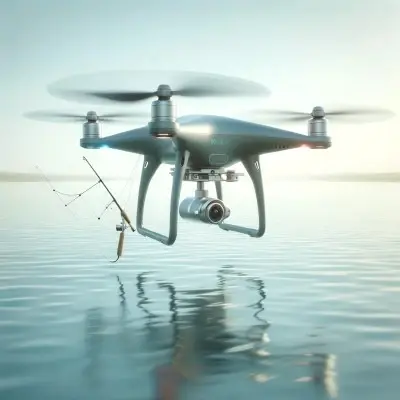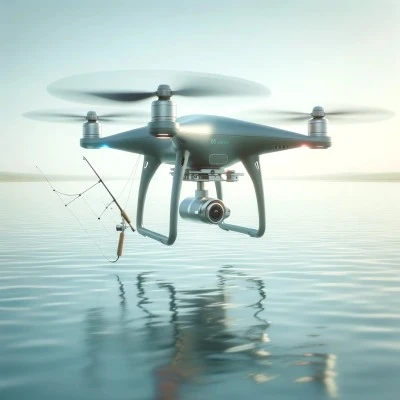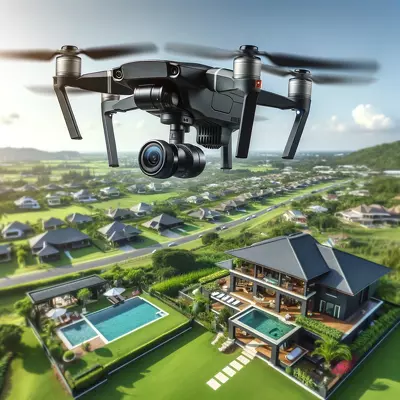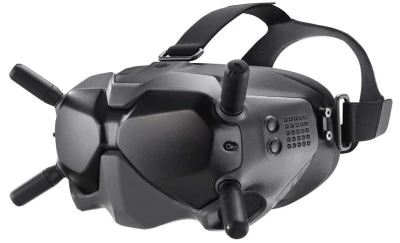From Above and Beyond: The Impact of Drone Technology on Pipeline Monitoring
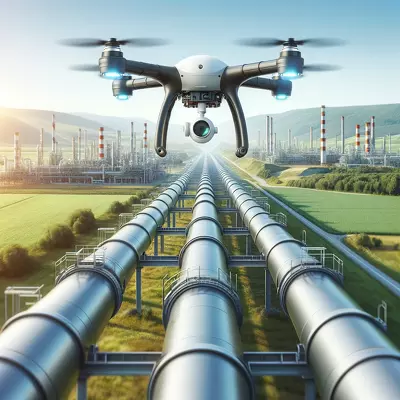
The utilization of uncrewed aerial vehicles has revolutionized the monitoring and maintenance of extensive pipeline networks. These aerial platforms offer a high-resolution, cost-effective solution for inspecting pipelines across challenging terrains and remote locations. By providing real-time data and imagery, they enhance the efficiency of operations, ensure environmental compliance, and significantly reduce the risk of leaks and system failures, safeguarding both infrastructure and the surrounding ecosystem.
I. Introduction to Pipeline Inspection via Drones
A. Overview of Pipeline Monitoring Challenges
The task of monitoring extensive pipeline networks, crucial for the transport of oil, gas, and water, presents significant challenges. Traditional methods have been labor-intensive and time-consuming and often need help to address the urgent need for rapid, accurate assessments. Environmental factors, accessibility issues, and the sheer scale of these networks further complicate monitoring efforts, necessitating innovative solutions to ensure the integrity and safety of pipelines.
B. The Evolution of Inspection Techniques
Over the years, the evolution of pipeline inspection techniques has been marked by significant advancements. From manual inspections to the use of pigging devices and satellite monitoring, each step forward has aimed at improving accuracy and efficiency. Despite these advancements, limitations in coverage, resolution, and the ability to quickly respond to emergent issues remained, leading to the exploration of more versatile and capable technologies.
C. The Role of Drones in Modern Pipeline Inspections
Drones, or uncrewed aerial vehicles (UAVs), have emerged as a game-changing solution in the realm of pipeline inspection. Equipped with cutting-edge technology, these aerial platforms can cover vast areas quickly, provide high-resolution images, and access difficult-to-reach locations without the need for human operators to be put in harm’s way. This capability not only enhances the efficiency of inspections but also significantly reduces potential risks associated with traditional inspection methods.
II. Advantages of Using Drones for Pipeline Inspection
A. Enhanced Safety Measures
The use of drones minimizes the need for human inspectors to access hazardous or remote areas physically, significantly reducing the risk of accidents and injuries. This approach allows for the safe monitoring of pipelines, even in environments that are challenging or dangerous to navigate.
B. Cost-Effectiveness
Deploying drones for pipeline inspections can lead to substantial cost savings compared to traditional methods. The ability to quickly survey large areas reduces labor and operational costs, while the early detection of potential issues can prevent expensive repairs and environmental damage.
C. Accessibility to Remote and Difficult Terrains
Drones excel in reaching areas that are otherwise inaccessible or challenging for human teams. Whether flying over mountainous regions, dense forests, or across bodies of water, drones can effortlessly inspect pipelines in virtually any location, ensuring comprehensive coverage.
D. Real-Time Data Collection and Analysis
With drones, data is collected in real-time, allowing for immediate analysis and decision-making. This capability is crucial for the early detection of leaks, structural damage, or other issues that could lead to significant problems if not addressed promptly.
III. Technologies and Features of Drones for Pipeline Inspection
A. High-Resolution Imaging and Thermal Cameras
Drones equipped with high-resolution and thermal imaging cameras can identify even the smallest anomalies along pipeline routes. These cameras capture detailed photographs and heat signatures, enabling the detection of leaks, corrosion, and other potential issues that are not visible to the naked eye.
B. Advanced Sensors for Leak Detection
Beyond visual inspections, drones can be outfitted with specialized sensors designed to detect gas leaks and other anomalies. These sensors can measure concentrations of specific chemicals in the air, providing precise data about the location and severity of leaks.
C. Automated Flight Path and Data Collection
Modern drones can be programmed to follow predetermined flight paths, ensuring thorough and systematic coverage of pipeline networks. This automation not only enhances the efficiency of inspections but also ensures consistency in data collection, a critical factor in ongoing monitoring efforts.
D. Integration with AI and Machine Learning for Data Analysis
The integration of artificial intelligence (AI) and machine learning algorithms with drone technology transforms the vast amounts of data collected into actionable insights. These technologies can automatically analyze images and sensor data, identifying potential issues more quickly and accurately than manual methods.
IV. Implementation Strategies for Drone-Based Pipeline Inspections
A. Planning and Regulatory Compliance
Successful implementation of drone-based inspections requires careful planning and adherence to regulatory standards. This includes obtaining the necessary permits, ensuring compliance with local and national airspace regulations, and coordinating with relevant authorities to prevent disruptions.
B. Pilot Training and Certification
Operating drones for pipeline inspections requires skilled pilots with specific training and certifications. Ensuring that pilots are adequately trained in both flying and data collection techniques is essential for the effective use of drones in this context.
C. Data Management and Analysis
The vast amount of data generated by drone inspections necessitates robust data management and analysis systems. Implementing software solutions that can store, process, and analyze data efficiently is crucial for translating raw data into useful insights.
D. Maintenance and Upkeep of Drone Fleets
Regular maintenance and upkeep of drone fleets ensure their reliability and longevity. This includes routine checks, software updates, and repairs as needed, ensuring that drones are always ready for deployment.
V. Case Studies: Success Stories of Drone Inspections
A. Pipeline Inspection in Remote Areas
One notable success story involves the use of drones to inspect pipelines in remote areas of Alaska. Traditional methods were not feasible due to the harsh environment and lack of infrastructure. Drones were able to provide comprehensive coverage of the pipeline, identifying potential issues before they could escalate into major problems.
B. Early Leak Detection and Prevention
In another instance, drones equipped with thermal imaging and gas sensors were deployed along a natural gas pipeline in the Southwest. The drones successfully detected a small leak that was previously undetected by traditional inspection methods, preventing potential environmental damage and financial loss.
C. Impact on Environmental Protection and Compliance
Drones have also played a critical role in enhancing environmental protection and compliance. By enabling more frequent and thorough inspections, drone technology helps identify and mitigate environmental risks associated with pipeline operations, ensuring adherence to environmental regulations and standards.
VI. Challenges and Limitations of Drone Inspections
A. Technical Limitations and Weather Dependencies
Despite their many advantages, drones face technical limitations, including battery life and payload capacity, which can restrict their operational range and the types of sensors they can carry. Additionally, drones are dependent on weather conditions, with high winds, rain, and extreme temperatures potentially impacting their performance.
B. Regulatory and Privacy Concerns
Drones for pipeline inspections must navigate regulatory frameworks that govern airspace and privacy. Ensuring compliance with these regulations while also addressing concerns related to privacy and data protection remains a challenge for operators.
C. Integration with Existing Pipeline Inspection Protocols
Integrating drone technology into existing pipeline inspection protocols requires careful planning and adaptation. Balancing the use of drones with traditional methods to achieve optimal coverage and accuracy can be complex, necessitating ongoing evaluation and adjustment.
VII. FAQs
Q: How do drones improve the safety of pipeline inspections?
A: Drones enhance safety by eliminating the need for human inspectors to access hazardous or difficult-to-reach areas, reducing the risk of accidents and injuries.
Q: What types of sensors do drones use for pipeline inspection?
A: Drones for pipeline inspection can be equipped with high-resolution and thermal imaging cameras, as well as advanced sensors for detecting gas leaks and other anomalies.
Q: Can drones inspect pipelines in all weather conditions?
A: While drones offer remarkable flexibility, their operation can be affected by extreme weather conditions such as high winds, heavy rain, or severe temperatures, which may limit their use.
Q: Are there regulatory hurdles for using drones in pipeline inspections?
A: Yes, the use of drones for commercial purposes, including pipeline inspections, requires adherence to specific regulatory standards, including airspace regulations and privacy laws.
Q: How does AI enhance drone-based pipeline inspections?
A: AI and machine learning algorithms can analyze the vast amounts of data collected by drones, identifying potential issues more quickly and accurately than manual analysis methods.
Q: What is required for effective drone pilot training for pipeline inspections?
A: Effective drone pilot training for pipeline inspections includes both flight training and specialized instruction in data collection and analysis techniques specific to pipeline monitoring.
Q: How do drones contribute to environmental protection in pipeline operations?
A: Drones contribute to environmental protection by enabling more frequent and thorough inspections, helping to detect and address leaks and other issues before they can cause environmental damage.
VIII. Conclusion
A. The Future of Drone Technology in Pipeline Inspection
The future of drone technology in pipeline inspection looks promising, with ongoing advancements in drone capabilities, sensor technology, and data analysis methods expected to enhance further the efficiency, accuracy, and safety of pipeline monitoring. As drones become more integrated into pipeline inspection protocols, their role in ensuring the integrity and reliability of critical infrastructure is set to increase.
B. Balancing Benefits and Challenges
While the benefits of drone technology for pipeline inspection are clear, balancing these advantages with the challenges of technical limitations, regulatory compliance, and integration with existing protocols is essential. Continued innovation, coupled with strategic implementation and adherence to best practices, will be key to maximizing the potential of drones in this field.
C. Encouraging Industry Adoption and Innovation
The adoption of drone technology for pipeline inspection represents a significant shift in how infrastructure is monitored and maintained. Encouraging wider industry adoption and continued innovation will require demonstrating the value of drones not only in terms of cost and efficiency but also in their ability to enhance safety and environmental protection. As the industry moves forward, collaboration between technology providers, regulatory bodies, and pipeline operators will be crucial in realizing the full potential of drones for pipeline inspection.
IX. Suggested Readings
In the evolving field of drone technology and its application in pipeline inspection, staying informed about the latest developments, best practices, and regulatory considerations is crucial. The following books provide valuable insights into drone technology, its applications in various industries, and the future of unmanned aerial vehicles.
- “Drones for Dummies” by Mark LaFay – A comprehensive guide for beginners interested in understanding drone technology, including its practical applications and regulatory considerations.
- “Drone Technology in Architecture, Engineering, and Construction: A Strategic Guide to Unmanned Aerial Vehicle Operation and Implementation” by Daniel Tal – This book explores the use of drone technology in the construction industry, offering insights that are also applicable to pipeline inspection.
- “The Drone Pilot’s Handbook: The knowledge, the skills, the rules” by Adam Juniper – A detailed guide covering the skills and regulations involved in flying drones for commercial purposes, including infrastructure inspection.
- “The Future of Drone Use: Opportunities and Threats from Ethical and Legal Perspectives” edited by Bart Custers – This collection of essays provides a comprehensive overview of the ethical and legal challenges associated with drone technology, offering valuable perspectives for professionals in the pipeline inspection field.
Understanding the complex landscape of drone technology and its application in critical infrastructure monitoring is essential for professionals seeking to leverage these tools effectively. These readings offer a foundation for further exploration and development in the field, contributing to the advancement of drone-based pipeline inspection practices and the broader adoption of UAV technology in various industries.
